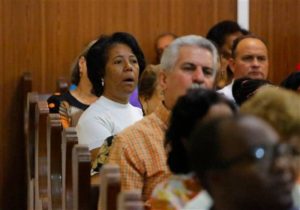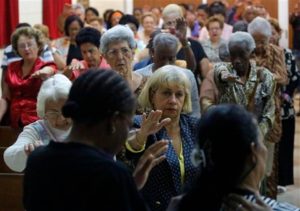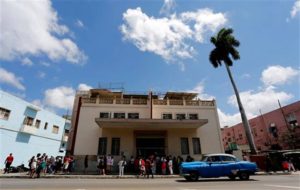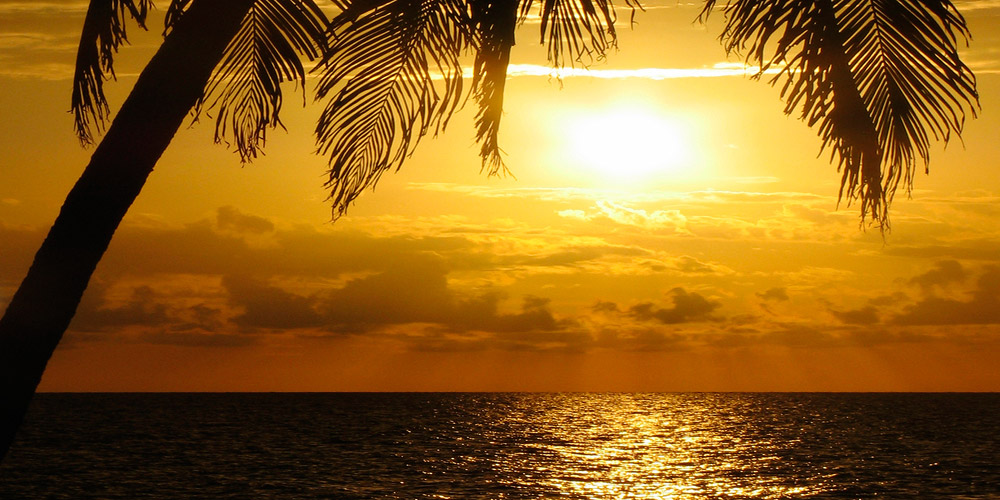Esther Zulueta recalls the times in which the evangelical temple that she attended since she was a child was an almost deserted building, where only a handful of fearful believers came.
It was the 1960s and the pastor serving the services, Juan Francisco Naranjo, was sent two years to a field of work to preach the gospel in a country where religion was considered the enemy of a new society.
Naranjo did not give up and continued his work until his death in 2000 at the head of the Baptist Church William Carey, which was always Zulueta.
One recent Sunday, in the temple there were about 500 believers who prayed and sang; And during the week you could hear the laughter of children with disabilities while working with doctors at a state clinic. In one corner, one group studied the Bible and in another, an orchestra rehearsed a few meters away from where at night there would be a meeting of Alcoholics Anonymous.
“In the 60’s, the few brothers who were coming had to bring the Bible hidden in a cartridge (a wooden envelope). There was fear,” recalled Zulueta, a 57-year-old woman. “The change was from night to day,” he told The Associated Press.
The government of President Donald Trump put religious freedom as a pillar to develop a new policy toward Cuba. His administration was no more specific, but international groups accused Cuba of systematically repressing believers, especially evangelicals, and destroying its facilities.
According to an analysis of the AP agency today in Cuba pastors and faithful said that the Caribbean nation is in the midst of an unprecedented boom of evangelical worship, with tens of thousands of Cubans attending the services without problems, from Methodists, Baptists, Presbyterians and Pentecostals, to new apostolic groups. At the same time, the churches – including the Catholic Church – are developing a growing social action, ranging from training campesinos to supporting citizens in the event of natural disasters and protecting the sick.
And although in recent years the government has demolished a handful of temples of evangelical groups, claiming they have no authorization to build them, it also allowed its parishioners to continue to gather for their worship in the courtyards of homes and in the old facilities of the denominations.
“There is a revival in these churches, of the most diverse denominations in the country and they are all growing, not only in the number of members, but in the capacity of their leadership and in social action,” the Rev. Presbyterian Joel Ortega Dopico, president of the Council of Churches of Cuba (CIC), an association that groups 32 of them.
Although there are no official figures, observers and experts estimate that 60% of the 11 million inhabitants are baptized by the Catholic Church, although only 10% practice this faith and many others dedicate themselves to Santeria (which requires baptism) .
Religious experts consulted by the AP estimated that there are also about 40,000 Methodists on the island, some 100,000 Baptists, and about 120,000 members of the Assembly of God, a Pentecostal group that in the early 1990s had only about 10,000 worshipers.
Just in the 90’s a religious opening was given in Cuba that resulted in the visit of three Popes as well as the opening of Orthodox temples and the emergence of evangelical spaces. At present there are about 25,000 evangelical houses of worship and in 2016 the CIC said that it delivered 300,000 Bibles. In addition, the government began to return facilities to the Catholic Church.
Despite this diversity, a US State Department report on religious freedom accused the Cuban government of harassing pastors, confiscating materials for worship and expropriating property.
And the London-based Christian Solidarity World Group said in a report that it registered 2,380 violations of religious freedom in Cuba in 2016, including declaring 2,000 churches of the Assembly of God illegal with 1,400 property confiscation proceedings. He also denounced the persecution and imprisonment of parishioners, as well as the destruction of churches.
In its reports, Christian Solidarity Worldwide mentioned the case of the Reverend Juan Carlos Núñez, whose temple in the eastern province of Las Tunas was shot down. In addition, some newspaper reports reported another similar action with the church of his colleague Bernardo de Quesada in Camagüey, the center of the country. Both are from the Apostolic Movement.
“I will not shut up, nor will I leave,” De Quesada said. “They (the authorities) tolerate me, but they do not swallow me.”
From the Tunas, Nunez said that in addition to tearing down his temple, he faced in 2016 a lawsuit for complaints from residents about the noises and for which purges a year of house arrest.
“Our task is to preach. We do not mix in politics,” Nunez said. “If there was a law of worship none of this would happen and everything would be clear.”
Gone are times of repression and the Constitution recognizes the right to religious freedom, although the absence of a law of worship seems to generate friction in a panorama of growth of churches on the island.
At present, evangelicals, Catholics, Jews, Muslims or Afro-descendant believers, among others, interact with the Office of Religious Affairs of the Communist Party and receive their legal status from the Ministry of Justice. Ortega Dopico estimated that there are about 70 denominations registered by the ministry, 10 of which were authorized in the last four years.
In addition to tolerance for worship, Christian churches have long been able to participate in lands that since 1959 and for years were exclusive to the state.
FOLLOW US ON TWITTER AND FACEBOOK. THECUBANHISTORY.COM

LA IGLESIA EVANGÉLICA CRECE EN CUBA.
Esther Zulueta recuerda los tiempos en los cuales el templo evangélico al que asistió desde niña era un edificio casi desierto, al que no llegaban más que un puñado de creyentes temerosos.
Era la década de 1960 y el pastor que atendía los servicios, Juan Francisco Naranjo, fue enviado dos años a un campo de trabajo por predicar el evangelio en un país donde la religión se consideraba enemiga de una nueva sociedad.
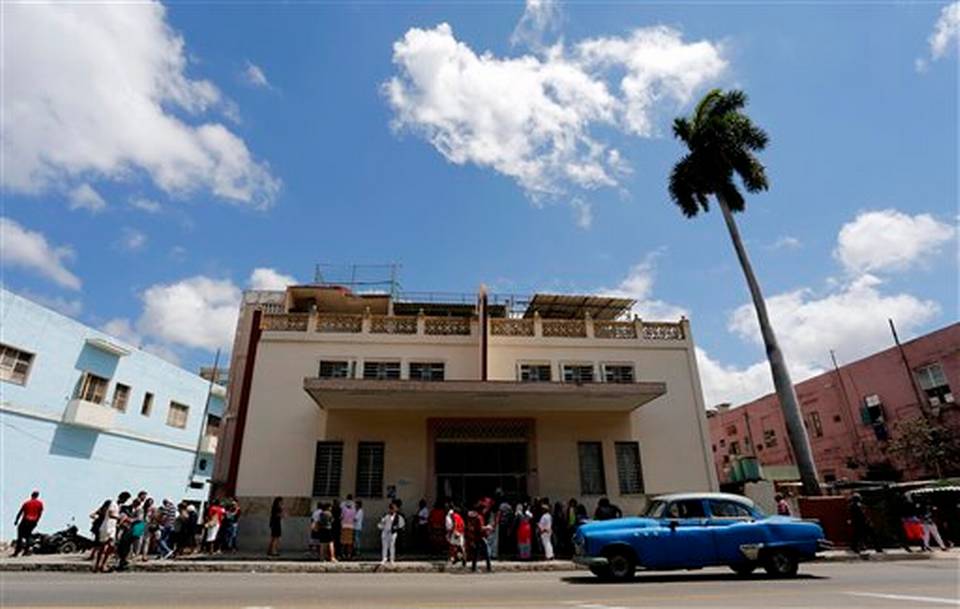
En esta fotografía del domingo 19 de marzo de 2017, varias personas se retiran de la iglesia Fuente de Vida al término de un servicio en La Habana, Cuba. Aunque el gobierno cubano reconoce ahora la libertad de religión, no concede a las iglesias el derecho a construir templos ni otras estructuras religiosas. Aunque las autoridades han demolido un número reducido de templos evangélicos en los últimos años, han permitido a los creyentes que continúen haciendo sus ritos en lugares de adoración improvisados en sus casas. Desmond Boylan AP Foto
Naranjo no desistió y continúo su labor hasta su muerte en el 2000 al frente de la Iglesia Bautista William Carey, a la que siempre fue Zulueta.
Un domingo reciente, en el templo había unos 500 creyentes que oraban y cantaban; y durante la semana se podía escuchar en el patio la risa de niños discapacitados mientras trabajaban con médicos de una clínica estatal. En un rincón, un grupo estudiaba la Biblia y en otro, una orquesta ensayaba a todo volumen a pocos metros de donde por la noche habría una reunión de Alcohólicos Anónimos.
“En los años 60 los pocos hermanos que veníamos teníamos que traer la Biblia escondida en un cartucho (un sobre de madera). Había miedo”, recordó Zulueta, una médica de 57 años. “El cambio fue de la noche al día”, dijo a The Associated Press.
El gobierno del presidente Donald Trump puso a la libertad religiosa como un pilar para desarrollar una nueva política hacia Cuba. Su administración no fue más específica, pero grupos internacionales acusaron a Cuba de reprimir sistemáticamente a los creyentes, especialmente a los evangélicos, y destruir sus instalaciones.
Según un Análisis de la agencia AP hoy en Cuba pastores y fieles aseguraron que la nación caribeña está en medio de un auge sin precedentes de adoración evangélica, con decenas de miles de cubanos asistiendo a los cultos sin problemas, desde metodistas, bautistas, presbiterianos y pentecostales, hasta nuevos grupos apostólicos. Al mismo tiempo, las iglesias –incluida la Católica– desarrollan una acción social cada vez mayor, que va de la capacitación a campesinos, al apoyo a la ciudadanía en caso de desastres naturales y la protección a enfermos.
Y aunque en los últimos años el gobierno sí demolió un puñado de templos de grupos evangélicos, alegando no tener autorización para construirlos, también les permitió a sus feligreses continuar reuniéndose para sus cultos en patios de hogares y en las antiguas instalaciones de las denominaciones.
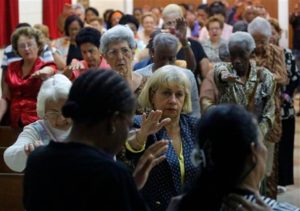
En esta fotografía del domingo 19 de marzo de 2017, varias personas asisten a un servicio religioso en la iglesia bautista William Carey en La Habana, Cuba. Las diversas iglesias en Cuba trabajan en actividades antes prohibidas para ellas, como acciones para la prevención de VIH-SIDA, la agricultura sustentable, la energía renovable, distribución de medicamentos, capacitación de trabajadores agrícolas y asistencia en casos de desastre. (Desmond Boylan AP Photo)
“Hay un avivamiento en estas iglesias, de las más diversas denominaciones en el país y todas están creciendo, no sólo en el número de miembros, sino en la capacidad de su liderazgo y en la acción social”, dijo a la AP el reverendo presbiteriano Joel Ortega Dopico, presidente del Consejo Iglesias de Cuba (CIC), un asociación que agrupa a 32 de ellas.
Aunque no hay cifras oficiales, observadores y expertos estiman que un 60% de los 11 millones de habitantes está bautizada por la iglesia católica, aunque apenas un 10% practica esa fe y muchos otros se dedican a la Santería (que les requiere el bautismo).
Expertos religiosos consultados por la AP calcularon que en la isla también hay unos 40.000 metodistas, unos 100.000 bautistas, y unos 120.000 miembros de la Asamblea de Dios, un grupo pentecostal que a comienzos de la década de 1990 sólo tenía unos 10.000 fieles.
Justo en los 90 se dio una apertura religiosa en Cuba que se tradujo tanto en la visita de tres Papas como la apertura de templos ortodoxos y el surgimiento de espacios evangélicos. En la actualidad hay unas 25.000 casas de culto evangélicas y en 2016 el CIC dijo que entregó 300.000 biblias. Además, el gobierno comenzó a devolver instalaciones a la Iglesia católica.
Pese a ese panorama de diversidad, un informe del Departamento de Estado estadounidense sobre la libertad de culto acusó al gobierno cubano de acosar a pastores, confiscarles materiales para el culto y expropiarles propiedades.
Y la organización Christian Solidarity Worldwide, con sede en Londres, señaló en un informe que registró 2.380 violaciones a la libertad religiosa en Cuba en 2016, entre ellas declarar ilegales a 2.000 iglesias de la Asamblea de Dios con 1.400 procesos de confiscación de propiedades. También denunció la persecución y encarcelamiento a feligreses, al igual que la destrucción de iglesias.
En sus informes, la Christian Solidarity Worldwide mencionó el caso del reverendo Juan Carlos Núñez, cuyo templo en la provincia oriental de Las Tunas fue derribado. Además, algunas notas periodísticas reportaron otra acción similar con la iglesia de su colega Bernardo de Quesada en Camagüey, al centro del país. Ambos son del Movimiento Apostólico.
“Ni me callo, ni me voy”, indicó De Quesada. “Ellos (las autoridades) me toleran, pero no me tragan”.
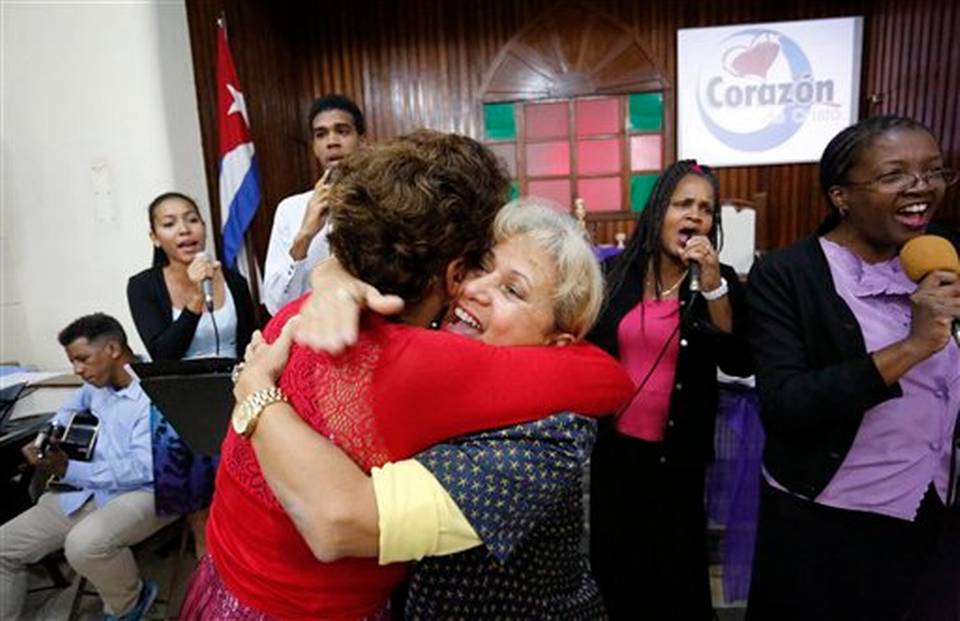
En esta fotografía del domingo 19 de marzo de 2017, dos personas se abrazan mientras otras cantan durante un servicio religioso en la iglesia bautista William Carey en La Habana, Cuba. Pastores y creyentes afirman que Cuba tiene un auge sin precedentes de adoración evangélica como lo muestra la asistencia semanal sin ningún problema de decenas de miles de cubanos a los cultos. Desmond Boylan AP Photo.
Desde las Tunas, Núñez comentó que además del derribarle su templo, enfrentó en 2016 un proceso judicial por quejas de los vecinos por los ruidos y por el que purga un año de prisión domiciliaria.
“Nuestra tarea es predicar. No nos mezclamos en política”, dijo Núñez. “Si hubiera una ley de culto nada de esto pasaría y todo estaría claro”.
Atrás quedaron los tiempos de represión y la Constitución reconoce el derecho a la libertad religiosa, aunque la ausencia de una ley de culto parece generar fricciones en un panorama de crecimiento de las iglesias en la isla.
En la actualidad los evangélicos, católicos, judíos, musulmanes o creyentes afrodescendientes, entre otros, interactúan con la Oficina de Asuntos Religiosos del Partido Comunista y reciben su estatus legal del Ministerio de Justicia. Ortega Dopico estimó que existen unas 70 denominaciones registradas por el ministerio, 10 de las cuales fueron autorizadas en los últimos cuatro años.
Además de la tolerancia al ejercicio de los cultos, las iglesias cristianas también pueden desde hace tiempo participar en terrenos que desde 1959 y por años eran exclusivos del Estado.
Agencies/AP/ NuevoHerald/ Andrea Rodríguez/ M. Weissenstein/ Extractos/ Internet Photos/ Arnoldo Varona/ TheCubanHistory.com
THE CUBAN HISTORY, HOLLYWOOD.



